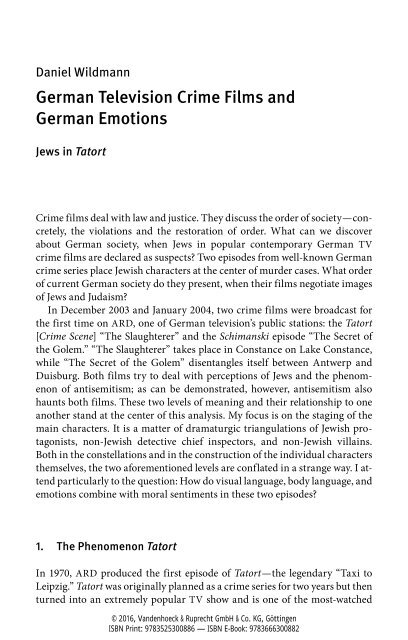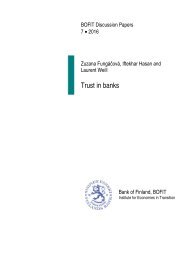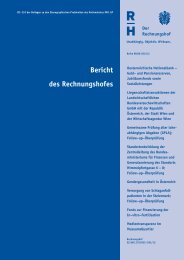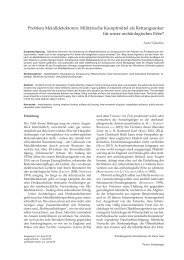Media and Minorities
9783666300882_ruhrmann_media_ebook_034247
9783666300882_ruhrmann_media_ebook_034247
Create successful ePaper yourself
Turn your PDF publications into a flip-book with our unique Google optimized e-Paper software.
Daniel Wildmann<br />
German Television Crime Films <strong>and</strong><br />
German Emotions<br />
Jews in Tatort<br />
Crime films deal with law <strong>and</strong> justice. They discuss the order of society — concretely,<br />
the violations <strong>and</strong> the restoration of order. What can we discover<br />
about German society, when Jews in popular contemporary German TV<br />
crime films are declared as suspects? Two episodes from well-known German<br />
crime series place Jewish characters at the center of murder cases. What order<br />
of current German society do they present, when their films negotiate images<br />
of Jews <strong>and</strong> Judaism?<br />
In December 2003 <strong>and</strong> January 2004, two crime films were broadcast for<br />
the first time on ARD, one of German television’s public stations: the Tatort<br />
[Crime Scene] “The Slaughterer” <strong>and</strong> the Schimanski episode “The Secret of<br />
the Golem.” “The Slaughterer” takes place in Constance on Lake Constance,<br />
while “The Secret of the Golem” disentangles itself between Antwerp <strong>and</strong><br />
Duisburg. Both films try to deal with perceptions of Jews <strong>and</strong> the phenomenon<br />
of antisemitism; as can be demonstrated, however, antisemitism also<br />
haunts both films. These two levels of meaning <strong>and</strong> their relationship to one<br />
another st<strong>and</strong> at the center of this analysis. My focus is on the staging of the<br />
main characters. It is a matter of dramaturgic triangulations of Jewish protagonists,<br />
non-Jewish detective chief inspectors, <strong>and</strong> non-Jewish villains.<br />
Both in the constellations <strong>and</strong> in the construction of the individual characters<br />
themselves, the two aforementioned levels are conflated in a strange way. I attend<br />
particularly to the question: How do visual language, body language, <strong>and</strong><br />
emotions combine with moral sentiments in these two episodes?<br />
1. The Phenomenon Tatort<br />
In 1970, ARD produced the first episode of Tatort — the legendary “Taxi to<br />
Leipzig.” Tatort was originally planned as a crime series for two years but then<br />
turned into an extremely popular TV show <strong>and</strong> is one of the most-watched<br />
© 2016, V<strong>and</strong>enhoeck & Ruprecht GmbH & Co. KG, Göttingen<br />
ISBN Print: 9783525300886 — ISBN E-Book: 9783666300882







